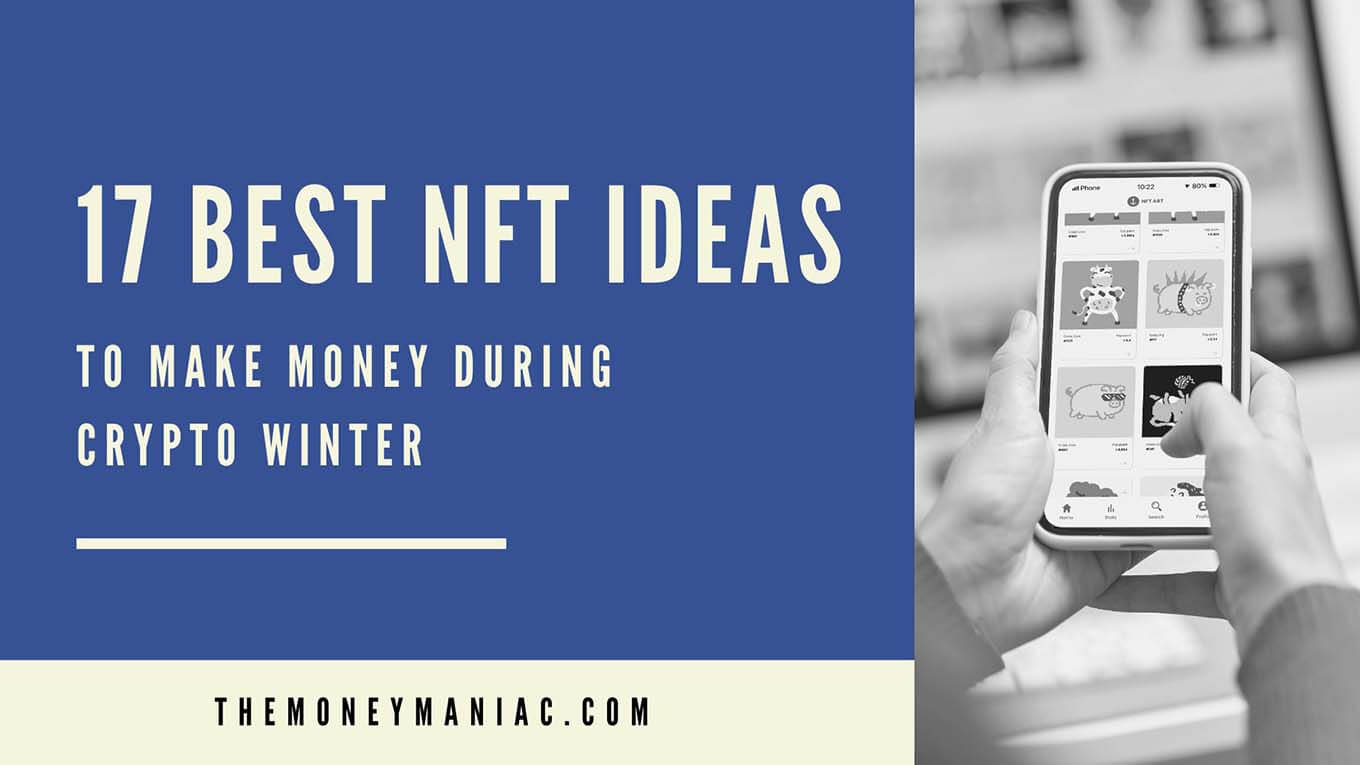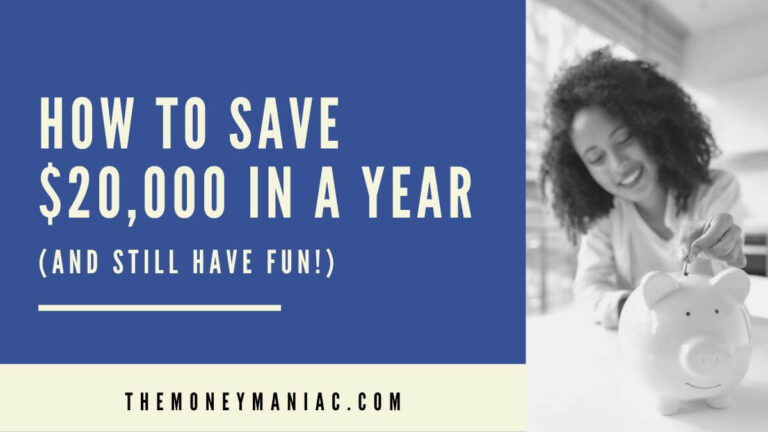Just because the crypto markets have cooled doesn’t mean there isn’t an opportunity to make money. If you have listened to any crypto podcasts recently, you have probably heard about the meteoric rise and fall of NFT collections like the Bored Ape Yacht Club.
But NFT adoption is still growing, especially in the art and gaming spaces. And fortunately, you don’t have to be a digital artist to own an NFT business.
In this article, we cover 17 NFT ideas for entrepreneurs to build during crypto winter. This roundup includes 12 types of NFTs to sell and 5 NFT business ideas that capitalize on the broader trend.
What is an NFT?
An NFT (non-fungible token) is a digital asset that represents ownership of a physical or digital object. They are valued for their rarity, uniqueness, and immutability (i.e. they cannot be changed). NFTs are typically stored on a blockchain, which allows for easy transfer of ownership and eliminates the need for a central authority.
What can be an NFT?
NFTs have seen widespread adoption, in part, because they can be used to verify ownership of just about anything. The most popular use cases for NFTs include:
- Video game assets: In-game items, such as weapons, armor, and collectibles, can be sold as NFTs. The best-known example is probably CryptoKitties, a digital collectible game that allows players to breed, trade, and sell virtual cats.
- Digital art: NFTs can be used to represent digital art, music, and other creative works. This includes Beeple’s record-setting piece, Everydays: The First 5,000 Days, which was sold as an NFT for $69 million at a Christie’s auction.
- Virtual real estate: Virtual land, buildings, and other digital assets can be fractionalized and sold as NFTs. The most popular metaverses for this are The Sandbox, Decentraland, and Axie Infinity.
- Sports memorabilia: NFTs facilitate ownership of digital sports memorabilia, such as trading cards and highlight reels. The NBA has been a pioneer in this space, selling NBA Top Shot collectibles of Durant, Lebron, and Antetokounmpo dunks.
- Tickets: Events like Coachella, VeeCon by Gary Vaynerchuk, and even Super Bowl LVI have turned their physical tickets into NFTs. This allows fans to trade and resell their tickets after the game, or even unlock exclusive access to certain vendors.
- And so much more: Tweets, GIFs, digital wearables, and more! Almost anything that can be owned can be represented with an on-chain digital asset.
How to make an NFT
If you are interested in creating your own NFT series, the process is relatively straightforward. Here are the 6 key steps to go from business idea to the NFT marketplace:
1. Select the NFT item
To get started, determine what asset you would like to convert to an NFT. As you are evaluating options, ask yourself the following questions to ensure your NFT has value:
- Can it be easily replicated? If so, it might not be worth creating an NFT for it. NFTs get much of their value from scarcity.
- Is it unique or special in some way? The more unique an asset is, the more likely someone will find value in it.
- Does it have utility? In other words, is it useful or does it serve a purpose?
- Is there a large enough market for it? Look at established digital creators to get a sense of the size of the potential opportunity.
2. Pick a blockchain
Once you settle on the idea for your first NFT, it’s time to pick a blockchain. Ethereum is the most popular solution in the NFT space due to its widespread adoption and trusted network. However, at times of peak usage, like during NFT sales, the network can become expensive.
For that reason, Solana has become a trendy alternative in the NFT community. While not as proven or widely used as Ethereum, Solana is much faster and cheaper. This can make it especially attractive for high-volume NFT drops.
Beyond Ethereum and Solana, the NFT industry becomes much more fragmented. There are a number of other options like Binance Smart Chain, Cardano, Flow, Cosmos, Tezos, and Polkadot that support NFTs. Each has its own benefits and drawbacks to consider.
3. Create your digital wallet
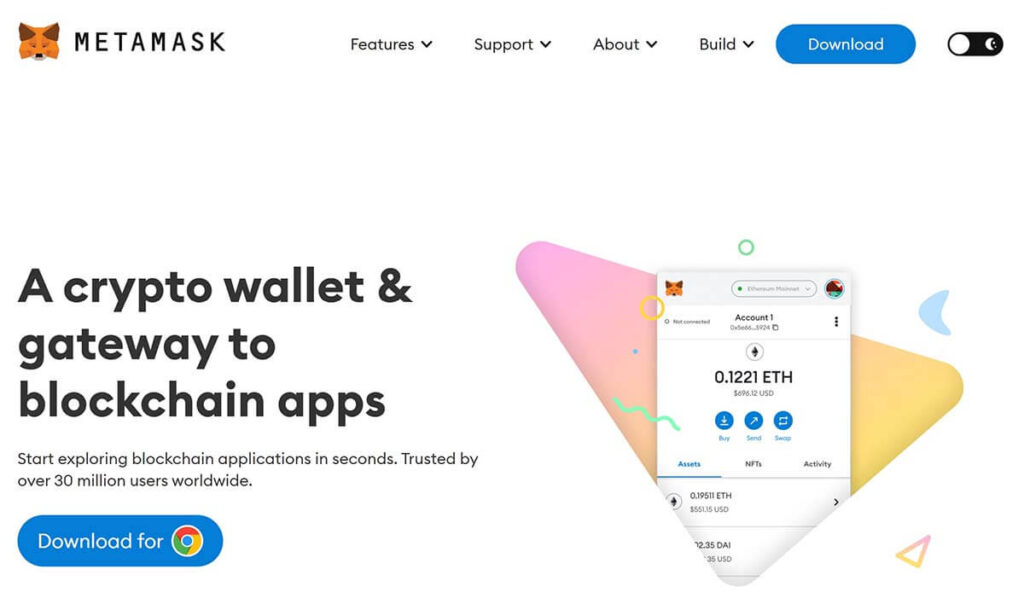
Digital wallets like Trust Wallet, Coinbase Wallet, and Metamask allow you to store and manage your NFT collection. This wallet will also act as a gateway to the NFT marketplace, where you can buy and sell your NFTs.
To create a wallet, simply download the wallet app and follow the onboarding instructions. Make sure to copy down your seed phrase and store it in a safe, offline location. This will be necessary if you ever need to restore your wallet.
You may also need to fund the wallet with Ethereum or Solana to cover transaction fees.
4. Choose an NFT platform
Once you have a funded digital wallet, connect with potential buyers on an NFT platform. The most popular options are OpenSea, Rarible, Nifty Gateway, Solanart, and Axie Marketplace.
These platforms act as both marketplaces and online galleries, where you can show off your NFT art. They also provide helpful analytics to track the performance of your collection.
5. Create your NFT
Most platforms offer a step-by-step guide to uploading digital files and converting them to NFTs. You can typically begin with a GIF, PDF, MP3, or MP4 to create your non-fungible tokens.
After the uploading process, you will be asked to set an initial price, rules for future sales and transfers, and any special features. At this point, you can preview the NFT before submitting it to the marketplace. And if you are unsatisfied with any details, you can change the metadata up until it has been listed for sale.
6. Start selling
The final step is to list your NFT for sale and watch the bids come in! Each platform has its own way of facilitating the exchange of funds and NFTs. This includes timed auctions, unlimited auctions, and one-time sales.
Before your NFT is officially listed on the platform, you must sign a couple of transactions in your digital wallet. You will have to cover gas, listing, commission, and transaction fees.
NFT ideas for inspiration
NFT ideas are limited by nothing but your imagination. Here are 12 categories to explore for ideas and inspiration for your next NFT business:
1. Generative art
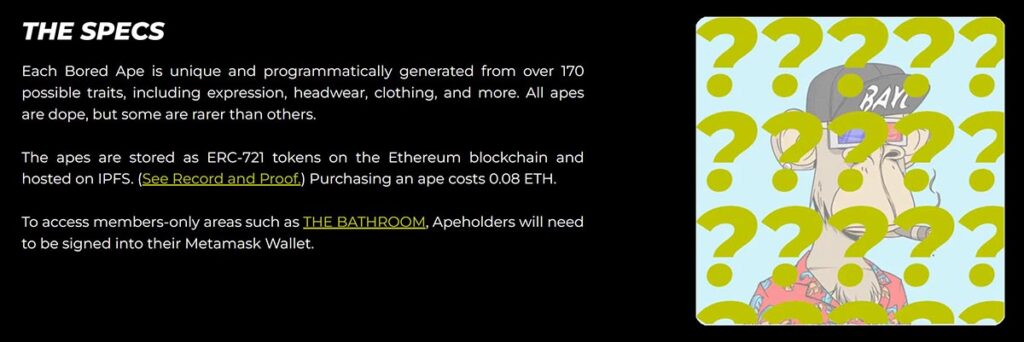
Generative art is created with a computer algorithm, and it is a popular way for artists to collaborate with AI technology. Generative art is often used to mass produce unique and interesting NFT art, including abstract patterns, fractals, and mosaics.
If you are a budding NFT artist, consider experimenting with generative art to quickly spin up new NFT art ideas. Even if you end up customizing the final products, you may still find generative art to be a helpful starting point.
2. Photographs
Professional photographers and hobbyists alike have been quick to embrace the potential of NFTs. From nature photography to street photography and everything in between, there is a huge range of opportunities for creating NFT photo collections.
Consider taking a page from Beeple’s playbook and assembling an NFT collection featuring your daily photographs. You could also create a limited edition collection with photos taken at different times and places, or develop a series featuring photos from every country worldwide.
3. Avatars
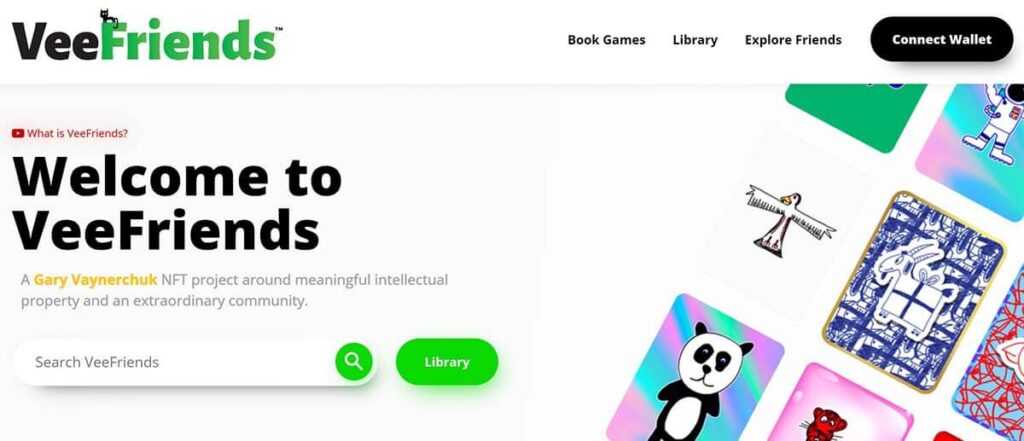
Avatars, mascots, and characters make great NFT ideas because they are easy to customize and personalize to fit a theme of your choosing. From animals to anime characters, you can create an avatar line for any niche imaginable.
For example, Vee Friends is a well-known NFT avatar series by Gary Vaynerchuk. Each avatar was created, imagined, and drawn by Gary himself. And although they are not the most beautiful of all NFT artwork, each NFT unlocks a specific online or digital experience with Gary.
4. Digital collectibles
Digital collectibles are digital assets that can be collected, purchased, and traded just like their physical counterparts. Sports cards and trading cards were two of the first digital collectibles to debut.
Today, you can find a broad range of NFT collectibles from popular franchise games like CryptoKitties and Gods Unchained. If you can imagine your own digital collectible game, there is an opportunity to develop the NFTs that tie into it.
5. MP3 NFTs
Music fans appreciate the opportunity to collect a piece of their favorite artists. For independent artists and small labels, MP3 NFTs provide a great opportunity to monetize music and gain more exposure at the same time.
MP3 NFTs can be bundled together as a package or sold separately as a series of singles. Each NFT can include its own set of metadata, such as album cover art, artist statements, and more. It’s also possible to create a limited edition series associated with the release of a specific album or artist.
6. AI-generated music
AI-generated music is a rapidly growing area of digital art. By using AI technology, musicians and creatives are producing an entirely new type of music. From synthetic jazz to electronic pop, it’s only a matter of time before AI-generated music NFTs become a mainstream phenomenon.
The EulerBeats Project is an excellent example of generative music in action — its second collection of 27 tracks sold for a sum of $3 million.
7. Features on songs
If you’re an up-and-coming singer or rapper, consider selling features on your songs as NFTs. You can create an NFT album of featured songs for your fans to join you on. This is a great way to monetize your music, create limited-edition releases, and interact with your audience in the process.
8. Tickets
Concerts, sports games, and theater shows are all perfect opportunities for creating NFT tickets. You can offer VIP packages that include exclusive merchandise, front-row tickets, and early access to special events.
Even virtual events can utilize NFT ticketing to add a special touch of exclusivity to the experience — and they make wonderful keepsakes.
To make your NFT tickets unique, consider adding a personal touch with data fields, including photos and audio recordings. This is a great way to add more value to your tickets while also giving fans something they can’t get anywhere else.
9. Token gating
NFTs can be used to limit access to websites, live streams, apps, or videos. This is referred to as token gating and it is becoming an increasingly popular way for content creators and developers to monetize their products. The process involves creating a token that fans need to purchase to gain access to certain content, events, or merch.
A popular example of token gating is “holders only” Discord channels. To become a part of the community, fans must first purchase the NFT associated with the channel.
10. Gaming collectibles
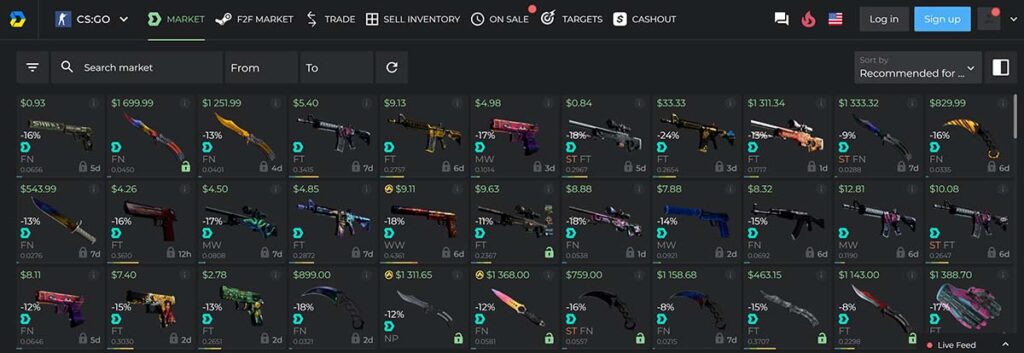
The gaming industry is one of the most popular and profitable sectors in the NFT space. From digital trading cards to game skins, there are countless opportunities to create and monetize gaming NFTs.
The possibilities are endless — you can create game-themed collectibles, characters with unique abilities, and much more.
The benefit of gaming NFTs is that they are designed for interoperability, so they can be transferred and interconnected with other games built on the same underlying blockchain.
11. 3D models
3D models can be used to create digital sculptures, virtual homes, interactive art pieces, and even entire virtual worlds. By leveraging blockchain technology, 3D model creators can monetize their creations and give buyers the ability to own a digital asset with custom characteristics.
From virtual real estate to video game items, 3D models can be used to create a wide variety of products that have significant value in the digital asset space.
12. Memes
Meme culture is here to stay, so if you’re looking to make money during crypto winter, consider creating NFT memes. Memes have become so popular in recent years that they’ve even been used as a form of digital currency — and now you can turn them into unique digital collectibles.
In fact, Bad Luck Brian did just that and cashed in $36,000 after being an internet icon for almost a decade. Just remember that not all memes will become overnight successes — so focus on those that are unique, topical, and humorous across internet culture.
Other creative NFT business ideas
If you want to explore the NFT market, you don’t have to be an artist. Many NFT ideas are outside the creative space and ideal for business-oriented minds.
Rather than creating your own NFTs, here are 5 ways to cash in on the NFT craze:
1) Sell an NFT online course
There is a lot of buzz in the NFT market, but even more confusion. People need to be educated on the basics of blockchain and NFTs, how to transact, and where the opportunities lie.
If you have an up-to-date understanding of the NFT space, you can easily monetize your knowledge with over-the-shoulder NFT courses. Consider creating a program teaching people how to mint, produce, and sell their first NFT.
2) Flip NFTs
Flipping is a popular way to make money by buying low and selling high. This strategy is effective with pallets, sneakers, and NFTs too.
To get started, search NFT marketplaces for non-fungible tokens that might be undervalued or that have the potential to appreciate. While it is risky to buy in early, those who can spot trends in rare NFT collections are rewarded handsomely.
Before making any investments, be sure to investigate the NFT creator, gauge the community support for the project, and compare its floor price on all relevant marketplaces. And because you are not guaranteed to succeed with every flip, spread your initial budget over multiple investments to diversify your risk.
3) Start an NFT blog
As the NFT movement continues to grow, it’s the perfect time to launch an NFT blog. Write detailed articles that answer common questions about NFTs and budding NFT projects in order to build an audience. Share step-by-step guides, expert tips, opinions on collections, and news surrounding the NFT world.
Develop a content production process that enables you to regularly publish new content and attract more readers. And when your blog grows large enough, monetize it with sponsored posts, affiliate marketing on NFT-related products, and ad placements.
4) Build an NFT marketplace
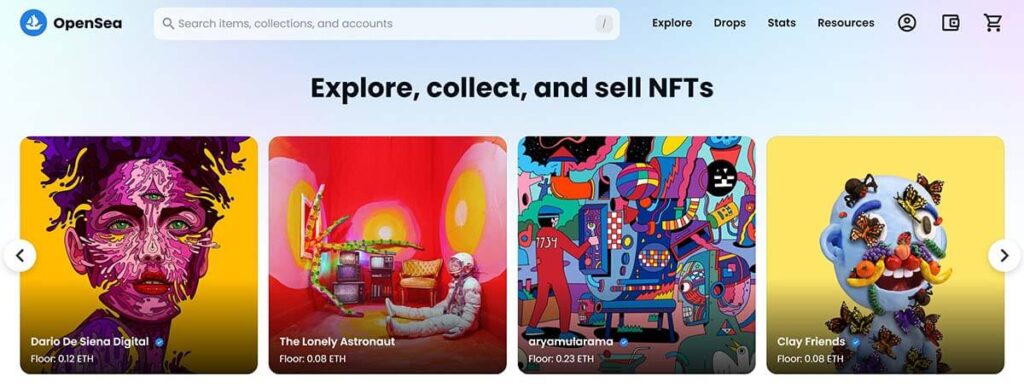
The NFT industry is currently dominated by a select few marketplaces, so there may be room for you to carve out a niche. Spend time testing existing platforms, identifying missing features, and brainstorming audiences you may be able to better serve.
If you’re able to create a sleeker or more accessible user experience, you could draw in users that have not yet been captured by the leading marketplaces.
5) Create an NFT brokerage
An NFT brokerage is best suited for experienced traders who understand the complexities of blockchain technology. As an NFT broker, you oversee transactions between buyers and sellers, acting as a middleman.
You are responsible for understanding the NFT market and predicting trends that you can use to broker the best deals. It is your job to understand and help assess what NFTs are worth and use that knowledge to help buyers and sellers come to terms on a mutually beneficial deal.
Final thoughts on NFT ideas
With the right NFT ideas, you can make money from non-fungible tokens even during crypto winter. From AI-generated NFT sales to writing an NFT-themed blog, there are plenty of ways to capitalize on this growing industry.
But before jumping into any venture, remember that the NFT market is nascent and highly volatile. So if you launch an NFT business, be sure that you are building for the long haul and that you can withstand fluctuations in demand. Because if you can do so, you may find yourself at the forefront of NFT culture by the next bull run. Good luck!
